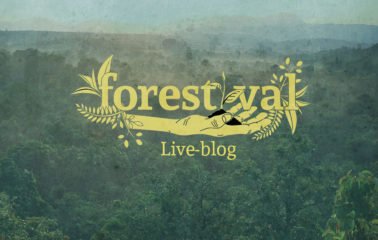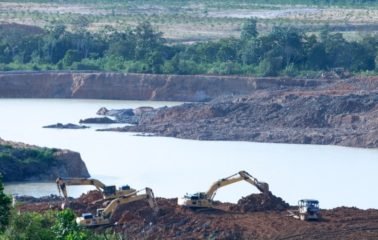JAKARTA (22/9) - Working together with Obsat, SETAPAK held a public discussion event about “Mining Commercialization VS The Future of Indonesian Forest”. As a regular program from Beritagar.id, a local news outlet, Obsat has become a discussion forum for people to talk about real and actual events that happen in Indonesia. There are also one or two guests that are considered competent in certain areas. Below here are a few important messages from Obsat #185 speakers.
Aris @santozariego (Fade2Black)
“One of many things that I’m very proud of Indonesia is the population of the orangutan. No matter where it is, an orangutan is still called as an orangutan. Unfortunately, the habitat of the orangutan is threatened so we need to think harder about what should we do to take care of it.”
Merah Johansyah (Coordinator of JATAM Nasional)
“The mining permit in Indonesia has significantly increased from 3.000 to 11.000 corporations. This doesn’t only affect the mainland or the sea, but also has seeped into people’s lives. The thing is, most of the mining lands in reservation forest area doesn’t have a legal permit of Izin Pinjam Pakai Kawasan Hutan (IPPKH). For instance, in Samarinda, East Kalimantan, 15 people tragically died in the pit that was formerly used for mining and what makes it sadder is that 14 of them are children. Not to mention that in the past five months, another six people died in which three of them are also children.”
Dian Patria (Team Coordinator of SDA Litbang KPK)
“Out of 11.000 mining corporations, almost 70% of them haven’t paid for royalty. Regarding the mining and forest commercialization, it takes time and transparency from the government for us to act.”
Rosa Vivien Ratnawati (Director of Oversight Complaints and Administrative Sanctions in Law Enforcement of KLHK)
“Each mining corporation needs to get an environmental permit from Analisis Mengenai Dampak Lingkungan (AMDAL) to find out what kind of things that should be fulfilled so that they can get IUP and reclamation assurance. Unfortunately, today’s condition shows otherwise. There are many AMDAL that only serves as a procedural letter from the corporation, thus we find many copy-pasted documents to speed up the permission approval, whereas ANDAL is supposed to be the first layer of supervision to minimize the rise of environmental and social issues. On the other side, AMDAL hasn’t specifically examined the social issue. Another thing is, just because a mining corporation has owned an IUP and paid for reclamation assurance, it doesn’t mean they can mine as much as they want. Nowadays, KLHK doesn’t only have authority to watch, but also take action, directly or indirectly, under the function of General Directorate of Law Enforcement of KLHK. People can also make a contribution through Pos Pengaduan KLHK so that every report can be immediately followed by some real actions. KLHK hopes that they can work with KPK to take some actions, not only based on the reclamation assurance, but also which source the permit is given from. It’s because in reality, there are many given permits for local areas that aren’t supposed to be used as a mining area.”
Lies Marcoes-Natsir (Author & Gender Activist)
“We need to address this environmental crisis with an open mind. It does affect our biodiversity, but the social crisis it causes is no less important to discuss. Some researches show that early-age marriage and sexual violence happen quite often in certain areas that are prone to environmental crisis. This can be a solid proof that environmental damage doesn’t only affect the environment itself, but indirectly, it also leaves serious effects in social and gender issues.”
In the event that successfully became a trending topic on Twitter via #TambangVsHutan hashtag, Lili Hasanuddin as the Program Director of SETAPAK hopes that the discussion can delivers people’s message about environmental saving to the policy makers and any corporations involved so they can increase their quality of life. Lili also hopes that people can help each other out to monitor the practice of extractive industries toward natural resources and continue supporting environmental conservation.


